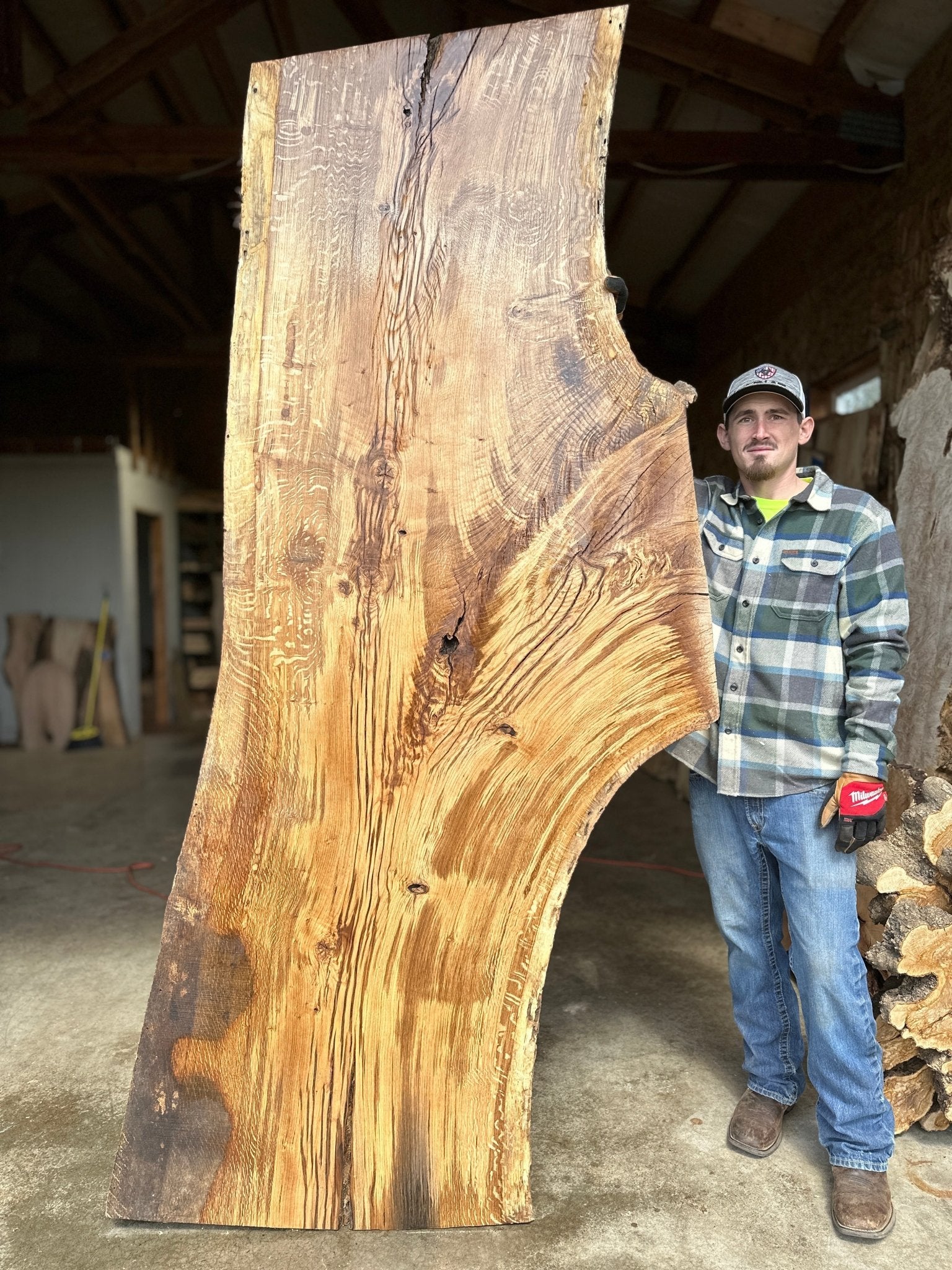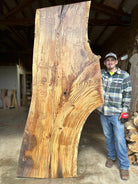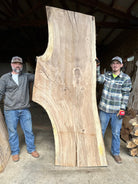LiveEdge White Oak
Couldn't load pickup availability
Species: White Oak
SKU: BGHLSWO354
Length: 91"
Width (Bottom): 30"
Width (Middle): 37"
Width (Top): 27.5"
Thickness: 2.25"
Board Foot: 44.79 BDFT
Weight Estimate: 187 Pounds
Origin: Battleground, Washington
Shipping Information:
-Slab Ships From: Battle Ground, Washington
-All slabs are subject to freighted shipping. Once purchased, we will contact you via email or phone to coordinate and secure the best negotiated shipping rate for your location. Shipping costs are based on your zip code, residential/commercial address classification, and whether a liftgate/forklift is required.
If you can't find a slab that perfectly fits your needs among our listed options, feel free to reach out to us directly. We can check our inventory for additional slabs that may suit your preferences.
Contact Information:
-Email: info@hamiltonleesupply.com
-Phone: 360.601.8388
Transform your vision into reality with our remarkable Live Edge slabs. Embrace the artistry of nature in your next woodworking project and create a unique masterpiece for your home.
Crafted with precision and attention to detail, this kiln-dried slab is project-ready, ensuring minimal wood movement and cracking. Our state-of-the-art iDry vacuum kiln removes moisture, guaranteeing its suitability for your project right away.
Please note that as each tree is unique, no two slabs are alike. This individuality guarantees that your furniture piece, whether it's a table, shelf, or any other creation, will be truly one-of-a-kind.
At Hamilton Lee Supply, we are committed to preserving and reusing stunning wood materials. Our focus on sustainability means that every slab tells a story and contributes to a greener future.
Common Names: White Oak
Scientific Name: Quercus alba
Distribution: Native to the Eastern United States
Tree Size: Grows to heights of 6585 feet (2025 meters) with trunk diameters of 34 feet (11.2 meters)
Average Dried Weight: Approximately 47.0 pounds per cubic foot (755 kilograms per cubic meter)
Specific Gravity (Basic, 12% MC): Ranges from 0.6 to 0.75
Janka Hardness: Measures around 1,350 pounds of force (5,990 Newtons)
Modulus of Rupture: About 14,830 pounds per square inch (102.3 MPa)
Elastic Modulus: Approximately 1,762,000 pounds per square inch (12.15 GPa)
Crushing Strength: About 7,370 pounds per square inch (50.8 MPa)
Shrinkage: Radial: 5.6%, Tangential: 10.5%, Volumetric: 16.3%, T/R Ratio: 1.9
Color/Appearance: The heartwood of White Oak is light to medium brown, often with an olive cast. Paler sapwood is not always sharply demarcated from the heartwood. Quartersawn sections display prominent ray fleck patterns. Red Oak (Quercus rubra) tends to have a slightly redder cast, but color alone isn’t always a reliable method of determining the type of oak.
Grain/Texture: The grain is straight, with a coarse, uneven texture.
Rot Resistance: White Oak is rated as very durable and is frequently used in boatbuilding and tight cooperage applications.
Workability: It produces good results with both hand and machine tools. However, it has moderately high shrinkage values, resulting in mediocre dimensional stability, especially in flatsawn boards. It can react with iron, causing staining and discoloration. It responds well to steambending and glues, stains, and finishes well.
Odor: White Oak has a distinct smell while being worked that is common to most oaks and is generally appealing.
Allergies/Toxicity: Although severe reactions are rare, oak has been reported as a sensitizer. Common reactions include eye, skin, and respiratory irritation, as well as asthmalike symptoms.
Pricing/Availability: It is abundantly available in a good range of widths and thicknesses, both as flatsawn and quartersawn lumber. White Oak is usually slightly more expensive than Red Oak, but its prices are moderate for a domestic hardwood.
Sustainability: This wood species is not listed in the CITES Appendices and is reported by the IUCN as a species of least concern.
Common Uses: White Oak is commonly used for cabinetry, furniture, interior trim, flooring, boatbuilding, barrels, and veneer.
Comments: White Oak is a strong, beautiful, rotresistant, easytowork, and economical wood, making it highly valued by woodworkers. The wood has historical significance and is famous for the Charter Oak, which hid the Connecticut Charter of 1662 in its cavity to prevent its confiscation by the British.
White Oak
Identification: See the article on Hardwood Anatomy for definitions of endgrain features.
White Oak (Endgrain 10x)
White Oak (Endgrain 1x)
Porosity: Ring porous
Arrangement: Exclusively solitary earlywood pores in rows of two to four, latewood pores in a radial/dendritic arrangement
Vessels: Very large in earlywood, small in latewood; tyloses (small, bubblelike structures) abundant
Parenchyma: Diffuseinaggregates
Rays: Narrow and very wide, normal spacing
Lookalikes/Substitutes: Besides being confused with Red Oak (see notes below), oak species in general are sometimes confused with other ringporous hardwoods like Chestnut (Castanea genus) and Ash (Fraxinus genus). However, oak species have very wide rays which make them easy to separate from other ringporous woods, which generally have narrower rays.
Notes: White Oak heartwood tends to have tyloses (small, bubblelike structures) that can be seen in the large earlywood pores, while species of Red Oak lack tyloses. Additionally, ray height, when viewed on the face grain, tends to be taller/longer on White Oak (sometimes exceeding one inch in length). See the article on distinguishing Red and White Oak for more details.







